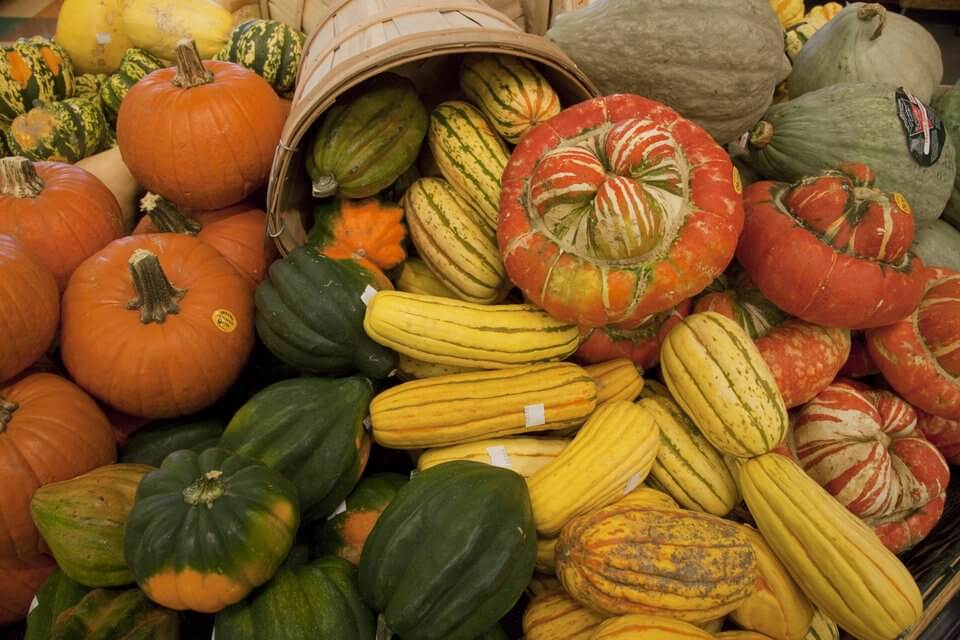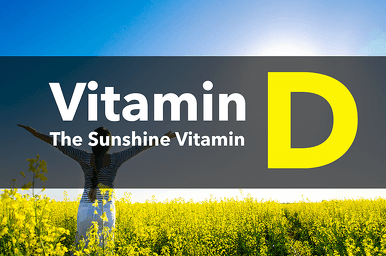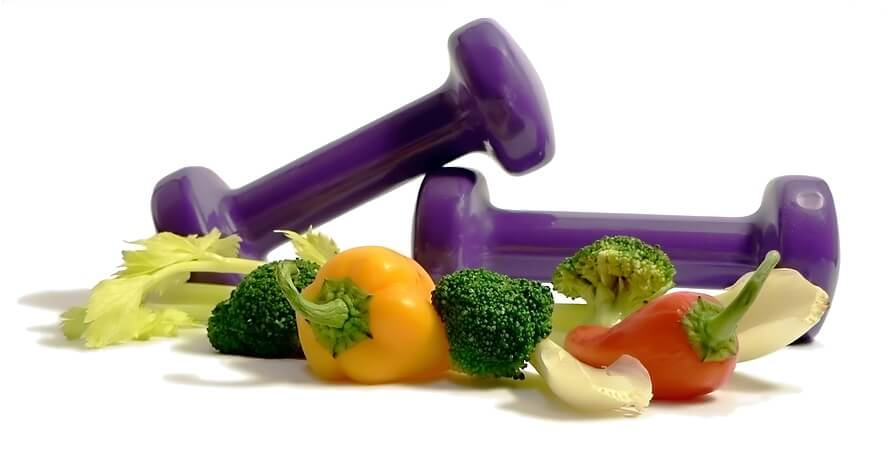Nutrition Q&A: Winter Squash

Q: Is there much nutritional value in winter squash? A: Think antioxidants and more! If I asked you to name a food rich in antioxidants, I bet you wouldn’t think to mention winter squash. Usually, green leafy vegetables get all the credit for providing the bulk of antioxidants in your diet, and most people are surprised to find out that winter squash happens to be an excellent source. Most people think of winter squash as a nutritionally void “starchy” vegetable and are shocked to find out how much this winter vegetable has to offer. From the well-known Butternut and Spaghetti squash to the more unusual Kabocha and Hubbard squash, these vegetables are harvested in the fall, when they are hard and ripe and most can be stored and enjoyed throughout the winter. Winter squash is naturally low in fat. What little fat the squash has comes from anti-inflammatory omega-3s fatty acids. One cup of baked winter squash will provide you with approximately 340 milligrams of omega-3 fats in the form of alpha-linolenic acid (ALA). Winter squash is also a good source of fiber, providing 3 grams per ½ cup serving. Winter squash supplies a substantial amount of potassium and vitamin C which keeps bones healthy, muscles pumping, blood pressure in check, and your immune system healthy. Winter squash also provides 10% of your daily allowance for folic acid which is also beneficial for heart health. The deep orange color of squash indicates one of the most noteworthy health benefits–carotenoids, which protect against heart disease and cancer. One of the most abundant carotenoids found in squash is beta-carotene (Vitamin A). Providing 163% of the Daily Recommended intake. Cancer can’t grow if it’s not allowed to oxidize. Beta-carotene, which is the key antioxidant in winter squash, protects the cell from harmful oxidation, https://holisticdental.org/xanax-treat-anxiety/. Quick tip for buying winter squash: choose squash that is unblemished and feels heavy for its size. Pick a squash with matte skin rather than glossy. A shiny exterior indicates it was picked too early, and won’t be as sweet as a fully grown squash. Most winter squash is available late into the fall. Store whole butternut squash in a cool, dry place (not the refrigerator) with plenty of ventilation; it should keep for up to three months. Cut squash will stay fresh for up to a week, wrapped, in the fridge. See 11 Varieties of Winter Squash. Nutrition Breakdown Per 1 cup cooked, approximately 205 grams Calories: 82 kcal Fat: 0.2 g Vitamin A: 1,144 mcg = 163 percent of DRI Vitamin B6: 0.3 mg = 20 percent of DRI Vitamin C: 31 mg = 41 percent of DRI Folate: 39 mcg = 10 percent of DRI Potassium: 582 mg = 12 percent of DRI
Nutrition Q&A: Vitamin D in the Winter

What can I do to maintain adequate levels of Vitamin D in the winter months? Winter is right around the corner which means colder weather, shorter days and less outside time. Less time spent outside means less sun exposure, and less sun exposure leads to lower vitamin D levels. Vitamin D is known as the sunshine vitamin. It takes just 10-15 minutes of direct sun exposure a day for our body to synthesize enough vitamin D to keep us healthy. During the winter months we spend less time outside which makes it hard to keep our levels within range. Without adequate vitamin D, we have an increased risk of illness and chronic diseases, including autoimmune disease, type 2 Diabetes, heart disease, and many cancers. vitamin D, along with Calcium, is integral to bone health. The average American’s vitamin D level will drop into the deficiency zone during the winter months. Following some simple guidelines can help you maintain optimal levels of vitamin D throughout the winter. I encourage everyone to have their vitamin D tested to know exactly where you stand; a vitamin D level of 30-100 ng/ml is considered sufficient. If yours is less, your physician may recommend supplementation. Food, and even milk, that is enriched with vitamin D does not provide us with enough vitamin D to keep us protected during the winter months. Supplementation is often needed. It is recommended that adults take 1,500-2,000 IU’s of vitamin D daily in addition to that consumed via your diet. Vitamin D Rich Foods 1360 IU Cod Liver Oil, 1 Tbsp 360 IU Salmon, cooked, 3.5 oz 345 IU Mackerel, cooked, 3.5 oz 200 IU Tuna Fish, canned in oil, 3 oz 162 IU Shrimp, mixed types, cooked, 4 oz 98 IU Milk, fortified, 1 cup 60 IU Margarine, fortified, 1 Tbsp 50 IU Pudding made with fortified milk, ½ cup 40 IU Ready to eat cereal, fortified, 1 cup 20 IU Egg, Whole, 1 12 IU Cheese, Swiss, 1 oz
Nutrition Q&A: Best for Your Breast

What can I do to increase my chances of survival from breast cancer? October is Breast Cancer Awareness Month. Breast cancer is the most common cancer diagnosis and the second most frequent cause of cancer mortality among women. In 2016, an estimated 246,660 new cases of invasive breast cancer are expected to be diagnosed in women in the U.S., along with 61,000 new cases of non-invasive breast cancer. About 1% of those diagnosed with breast cancer are men. During the month of October we celebrate prevention and survival. It’s also a time to address new strategies and research that increase both survival rate and foster increased prevention. I feel more research is always needed to get closer to finding a cure, but at the same time I realize the dire need to understand the cause. Though the exact cause has not yet been determined there has been a lot of research on ways to both decrease our risk of both developing breast cancer and of breast cancer recurrence. Research has directly linked excessive body weight, unhealthy lifestyle and physical inactivity to certain types of cancer. Recommendations may seem simple, but reinforce important day-to-day advice: Maintain a healthful body weight – According to a wide scope of research, those who carry excess body weight, particularly in their midsection, are at greater risk for cancer and recurrence. Obesity-related diseases are linked to heart disease, diabetes, high blood pressure, and certain cancers like breast cancer. Maintaining a healthy body weight can significantly reduce cancer risk and chance of recurrence. Maintain a healthful diet – A poor diet, one high in refined grains, saturated fat, fast food and low in fruits/vegetables and whole grains can increase your risk of developing cancer. Be physically active – According to scientific literature, exercise promotes decreased cancer risk and decreased risk of recurrence, not to mention overall well-being. The good news is, it doesn’t take hours of running uphill to reap the benefits. Simply standing instead of sitting, walking, gardening, stretching, or practicing yoga and meditation are ways to restore health. The well-known cancer organization, The American Institute for Cancer Research, http://www.aicr.org/foods-that-fight-cancer/ offers solid recommendations for cancer prevention and their web-site offers a wealth of information on the most current research in the field of cancer.
Nutrition Q&A: Importance of Exercise

I try to eat right and watch my weight in order to prevent recurrence of breast cancer. What else can I do? It’s great that you are interested in what you can do to manage your weight and prevent cancer recurrence. Nutrition and Exercise go hand in hand, kind of like salt and pepper. Being a breast cancer survivor, how often have you heard that exercise is important to help decrease your chance of recurrence? Hopefully most of you’ve heard it at least once, and if you haven’t, you’re hearing it now. The latest research has shown that regular exercise has a huge beneficial impact on your health, especially being a breast cancer survivor. Not only has it been linked to decreased breast cancer mortality (dying from breast cancer) but it also lowered the risk of overall mortality (dying from any other cause). So how much exercise do you need to reap the benefits? The American Cancer Society (ACS) Guidelines on Nutrition and Physical Activity for Cancer Survivors recommend that breast cancer survivors AVOID BEING INACTIVE. American Cancer Society recommends you start exercising as soon as you possibly can post surgery and/or treatment. Even during treatment I encourage light activity (short walks) to help combat fatigue and clear the mind. Once treatment is complete, and you’ve been given clearance from your physician, it is recommended that you gradually work up to 30 minutes or more of moderated aerobic activity (brisk walking or riding a stationary bike) on five or more days of the week. Results presented from a large study of over 13,000 breast cancer survivors found that women meeting or exceeding the 150 minutes per week guideline had a TWENTY FIVE percent lower risk of dying from breast cancer and 27% lower risk of dying from any other causes. This was compared to breast cancer survivors who were less active. It’s also recommended to add strength-training exercises twice per week for added benefits. This can be done via lifting weights, using exercise bands or other means. But, before attempting strength training, talk with your TurningPoint Physical Therapist. Your therapist can guide you in the right direction based on your current physical abilities.










